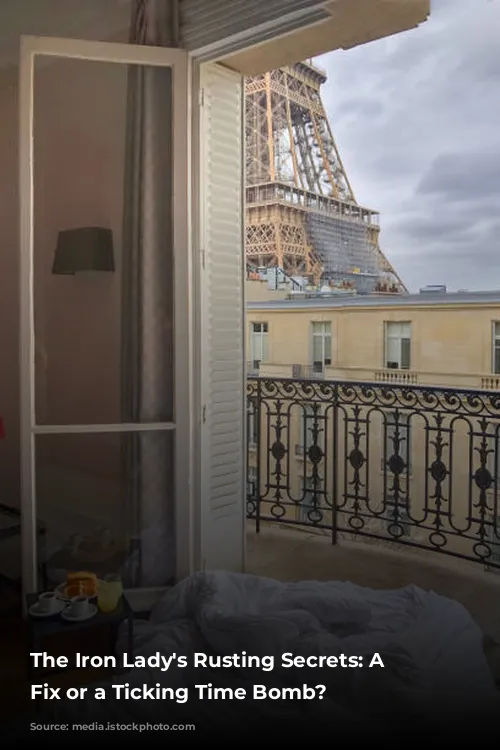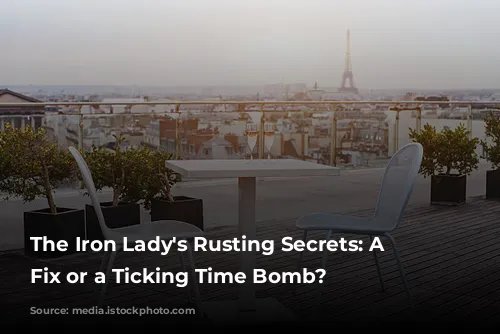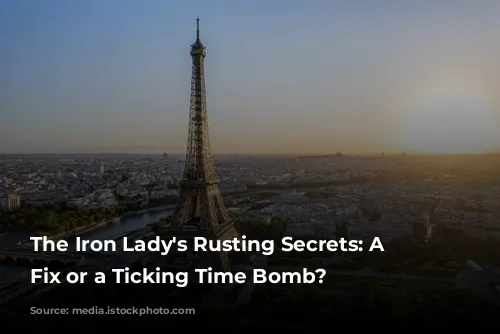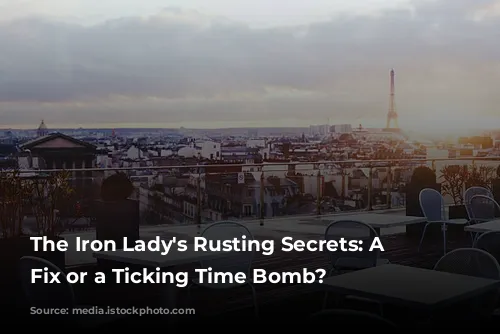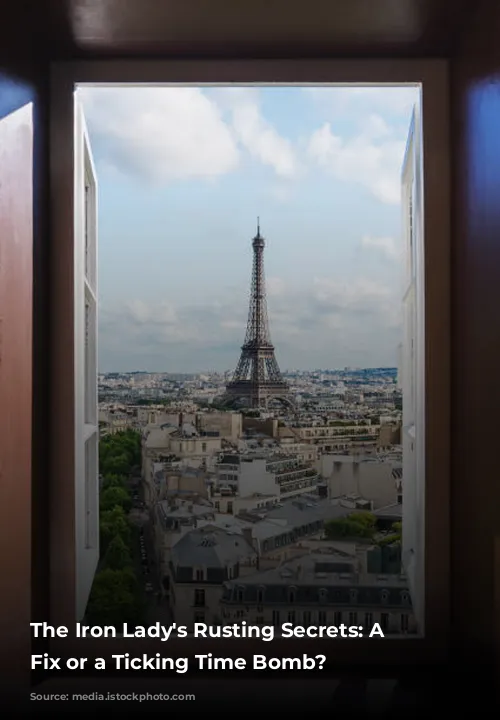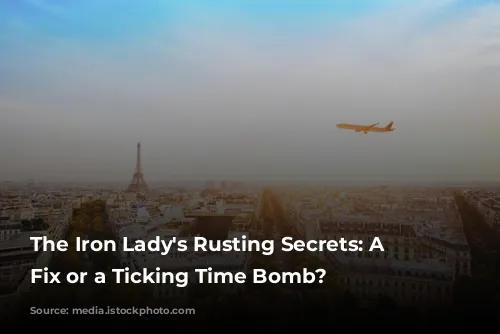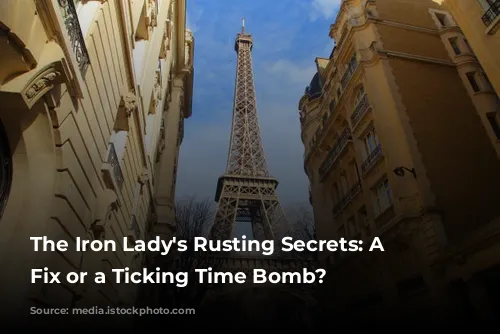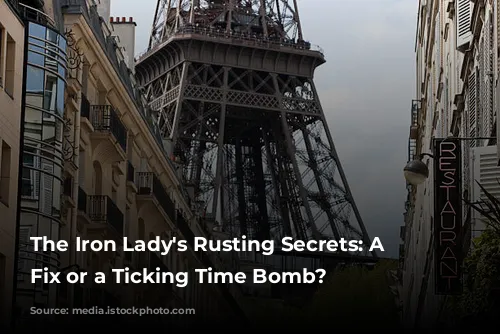The iconic Eiffel Tower, Paris’s Iron Lady, is facing a serious problem: rust. This beloved landmark, expected to stand for just 20 years when it was completed in 1889, is now battling the ravages of time. While it has stood tall for over a century thanks to dedicated maintenance, whispers of its deteriorating condition are now reaching the public.
Leaked reports reveal a concerning reality: the tower is riddled with rust and in need of a complete overhaul. However, instead of tackling the issue head-on, the tower is undergoing a cosmetic makeover for the 2024 Olympic Games. This quick fix, according to experts, may be doing more harm than good.

A Century of Rust: A Legacy of Neglect?
The Eiffel Tower, a marvel of engineering, was built using puddle iron, a high-quality wrought iron produced during the Industrial Revolution. Its creator, Gustave Eiffel, understood the importance of painting to protect the metal from corrosion and recommended repainting every seven years. He considered it the “essential ingredient” for the tower’s longevity.
Sadly, this crucial advice seems to have been ignored. The tower has undergone 20 repaints, but recent reports reveal that the current approach is not sufficient. Instead of stripping and repainting the entire structure, only 5% will receive proper treatment due to delays and concerns about lead contamination.

A Cosmetic Fix: A Recipe for Disaster?
Experts are sounding the alarm about the inadequacy of the current repair strategy. They warn that painting over old paint without proper stripping is exacerbating the corrosion problem. This cosmetic facelift, they say, is a “lamentable” solution that will ultimately worsen the tower’s condition.
The tower’s management, Sete, seems hesitant to undertake a comprehensive restoration, citing the potential loss of tourist revenue. The Eiffel Tower is a major attraction, attracting millions of visitors annually. A prolonged closure for repairs would undoubtedly impact its income.
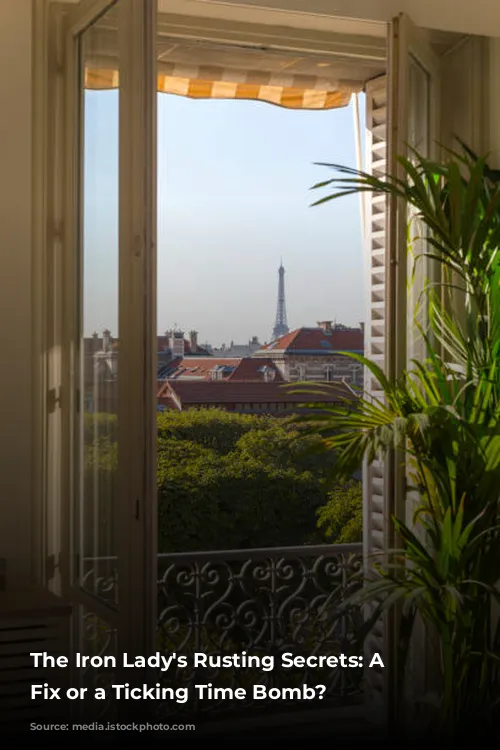
A History of Warnings: Unheeded Calls for Action
Past reports have highlighted the urgency of a comprehensive maintenance plan for the Eiffel Tower. A 2010 report emphasized the need for a new policy focused on testing the aging metal structure. In 2014, a paint company report found cracks, rust, and poor paint adhesion.
Despite these warnings, Sete appears to be prioritizing short-term gains over long-term preservation. This approach is not only a disservice to the historical significance of the Eiffel Tower but also a potential risk to its future.
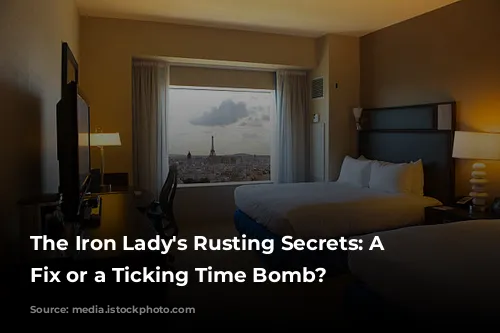
A Looming Crisis: Can the Iron Lady Be Saved?
The future of the Eiffel Tower hangs in the balance. Experts are urging Sete to take immediate action and implement a comprehensive restoration plan. This will involve stripping, repairing, and repainting the entire structure, a task that will undoubtedly require a significant investment and a lengthy closure period.
While some argue that the Eiffel Tower can be saved through regular repainting, many experts disagree. They believe that a thorough restoration is necessary to ensure the tower’s long-term survival. The question remains: will Sete prioritize the tower’s long-term well-being, or will they continue to rely on cosmetic solutions that ultimately jeopardize its future?
